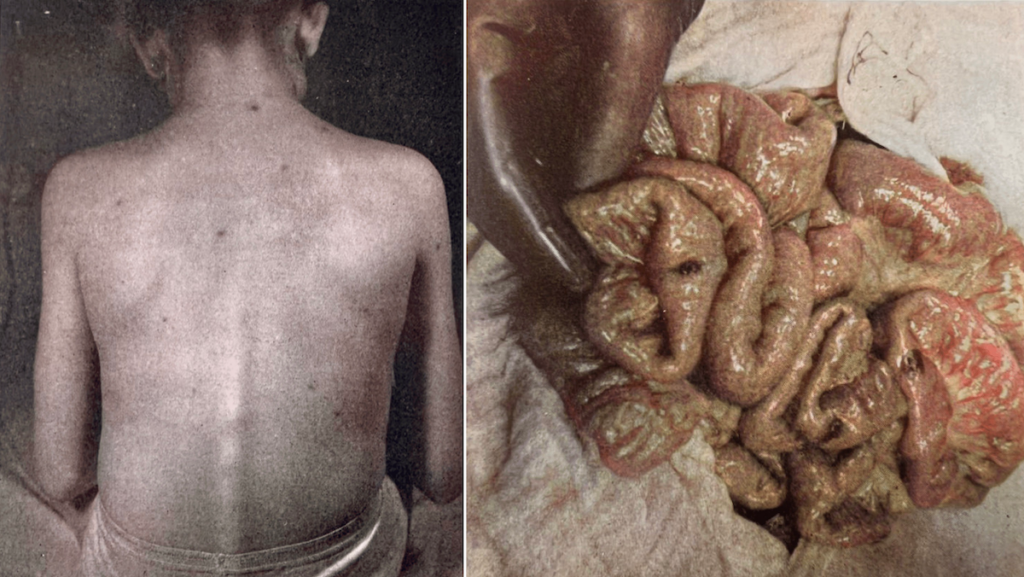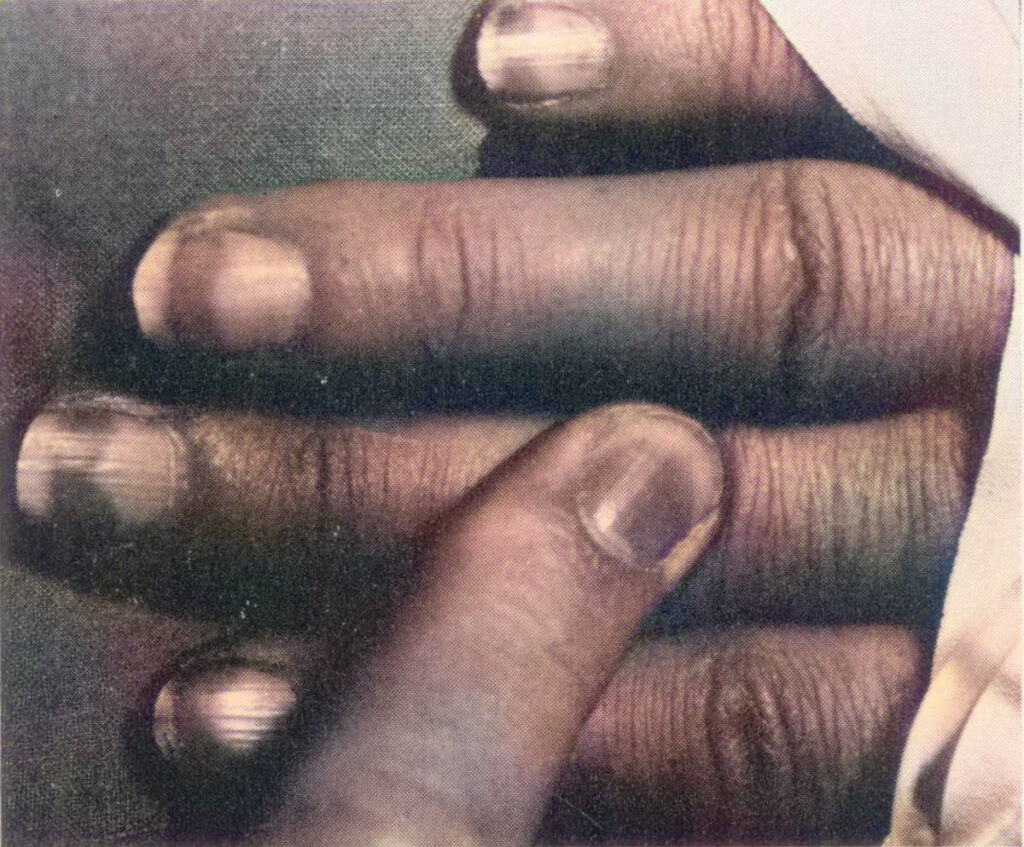William B. Bean
William Bennett Bean (1909-1989) was an American physician, medical historian
Between 1937 and 1974 Bean published over 600 works, and for over thirty years, and served as editor for fifteen journals, most notably the Archives of Internal Medicine.
Bean wrote on myriad eclectic topics ranging from respiratory, liver and cardiac disease; to nutrition, climatology, slum eradication and housing; to the aphorisms of Latham and Osler and the history of medicine.
Eponymously remembered for his description of Bean syndrome in 1958 [Blue rubber bleb nevus syndrome]
Biography
- Born on November 8, 1909 in Manila, Philippine Islands son of physician Robert Bennett Bean, MD (1874-1944), a former resident under Sir William Osler
- 1932 – BA, University of Virginia
- 1935 – MD, University of Virginia. Interned at the Johns Hopkins Hospital
- 1948 – Professor of medicine and head of internal medicine, University of Iowa College of Medicine
- 1950 – Collated his father’s student notes whilst studying under Osler; published as Sir William Osler: Aphorisms from His Bedside Teachings
- 1958 – Fellow of the American Medical Writers Association
- 1969 – Swanberg Distinguished Service Award
- 1970 – Co-founded the American Osler Society
- 1974 – Director of the Institute for Medical Humanities at the University of Texas Medical Branch in Galveston; acting chairman of the department of dermatology
- 1980 – Iowa, Sir William Osler Professor Emeritus
- Died on March 1, 1989
Medical Eponyms
Bean syndrome (1958) [Blue rubber bleb nevus syndrome]
1958 – In his classic monograph, Bean separated from the heterogenous group of vascular lesions of the skin a variety of bluish hemangioma of the skin found in association with hemangiomas of the gastrointestinal tract which cause serious bleeding. To this he gave the name “blue rubber-bleb nevus of the skin and gastrointestinal tract” because the larger hemangiomas “have some of the feel and look of rubber nipples, are compressible and refill fairly promptly from their rumpled compressed state.”
The skin lesions vary in size, shape, and number. Bean did not emphasize the microscopic appearance of the lesions although he included a photomicrograph of a section of one of the skin lesions in the case he described. He stated:
While much less common than hereditary hemorrhagic telangiectasia, the syndrome of erectile bluish nevi of the skin and angiomatosis of the gut associated with enteric bleeding is definite. Though lesions of the skin may bleed with injury, spontaneous bleeding is rare, whereas it is characteristic of the lesions of the bowel
Bean 1958: 178-185

Figure 64 (right). Blue rubber-bleb nevus. This photograph was taken at operation. It reveals three of the many hemangiomas of the gut of the patient shown in Figure 63.
Bean 1958: 178-185
Other eponyms
Bean Award (2000): The American Osler Society award to support research in the broad areas of medical history and medical humanities
Key Medical Contributions
1962 – Bill Bean and James Clifton published on A reddish discoloration of the distal nail was noted in two patients with azotemia.
In 1962, Dr. James Clifton and I observed two patients who had the extraordinary abnormality depicted in Figure 6. Between a third and almost a half of the distal portion of the nail they had a red, slightly orange color. Most of this color faded out when the free edge of the nail was pressed though the area which had been red was still distinguished by a gray color. Both patients with this nail lesion had renal disease. One died of uremia. The other had only moderate renal failure associated with prolonged diabetes.
Bean 1963

Major Publications
- Bean WB. Infarction of the heart. III. Clinical course and morphological findings. Annals of Internal Medicine. 1938; 12: 71-94. [Dressler syndrome]
- Bean WB. Omphalosophy: An Inquiry into the Inner (and Outer) Significance of the Belly Button. Trans Am Clin Climatol Assoc. 1954; 65: 295-306.
- Bean WB. Dyschondroplasia and hemangiomata: Maffucci’s syndrome. AMA Arch Intern Med. 1955 Jun; 95(6): 767-78
- Bean WB. Vascular spiders and related lesions of the skin. 1958 [Bean syndrome 178-185]
- Bean RB, Bean WB. Sir William Osler aphorisms: from his bedside teachings and writings. 1961
- Bean WB. A discourse on nail growth and unusual fingernails. Trans Am Clin Climatol Assoc. 1962;74:152-67
- Bean WB. Nail growth. A twenty-year study. Arch Intern Med. 1963 Apr;111:476-82
- Bean WB. Of Doctors and Priests. In: Religion and medicine essays on meaning, values, and health. 1967
- Bean WB. Rare diseases and lesions: their contributions to clinical medicine. 1967
- Bean WB. Nail growth. Thirty-five years of observation. Arch Intern Med. 1980 Jan;140(1):73-6
- Bean WB. Walter Reed: a biography. 1982
- Bean WB. Landmark perspective: Walter Reed and yellow fever. JAMA. 1983 Aug 5;250(5):659-62
References
Biography
- Cummings MM. A comment on William B. Bean’s medical writing. The Bean bag. Arch Intern Med. 1974 Nov;134(5):834-5
- Clifton JA. William B. Bean of Iowa. Arch Intern Med. 1974 Nov;134(5):836-8.
- Leavell BS. William Bennett Bean. The background. Arch Intern Med. 1974 Nov;134(5):839-41
- Massey RU. William Bennett Bean 1909–1989: Clinical Scholar and Historian of Medicine, Journal of the History of Medicine and Allied Sciences, 1989; 44(3): 285–287
- Bibliography. Bean, William B. (William Bennett) 1909-1989. WorldCat Identities
Eponymous terms
- Gascoyen GG. Case of Neavus Involving the Parotid Gland and Causing Death from Suffocation: Naevi of the Viscera. Transactions of the Pathological Society of London 1860; 11: 267
- Rice JS, Fischer DS. Blue rubber-bleb nevus syndrome. Generalized cavernous hemangiomatosis or venous hamartoma with medulloblastoma of the cerebellum: case report and review of the literature. Arch Dermatol. 1962 Oct;86:503-11.
- Reuben A. Along came a spider. Hepatology. 2002 Mar;35(3):735-6
[cite]
Doctor in Australia. Keen interest in internal medicine, medical education, and medical history.

